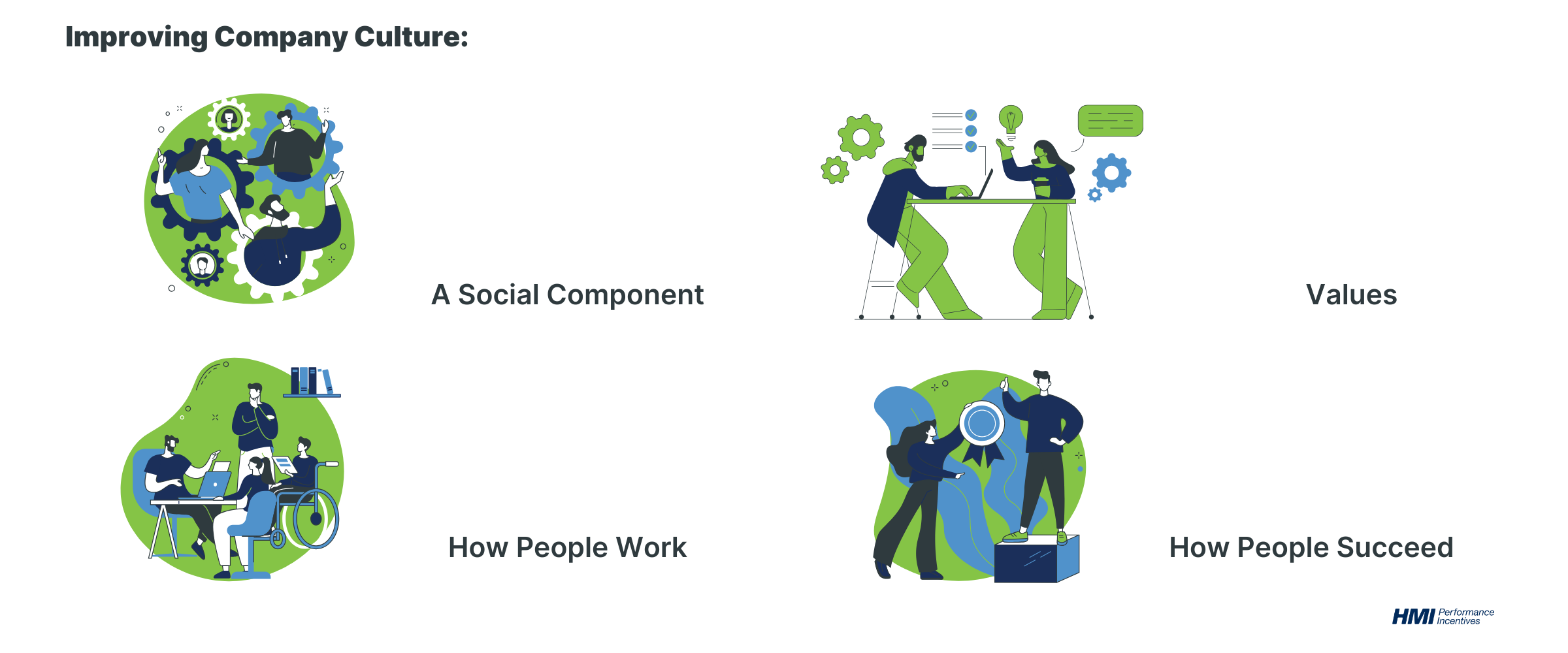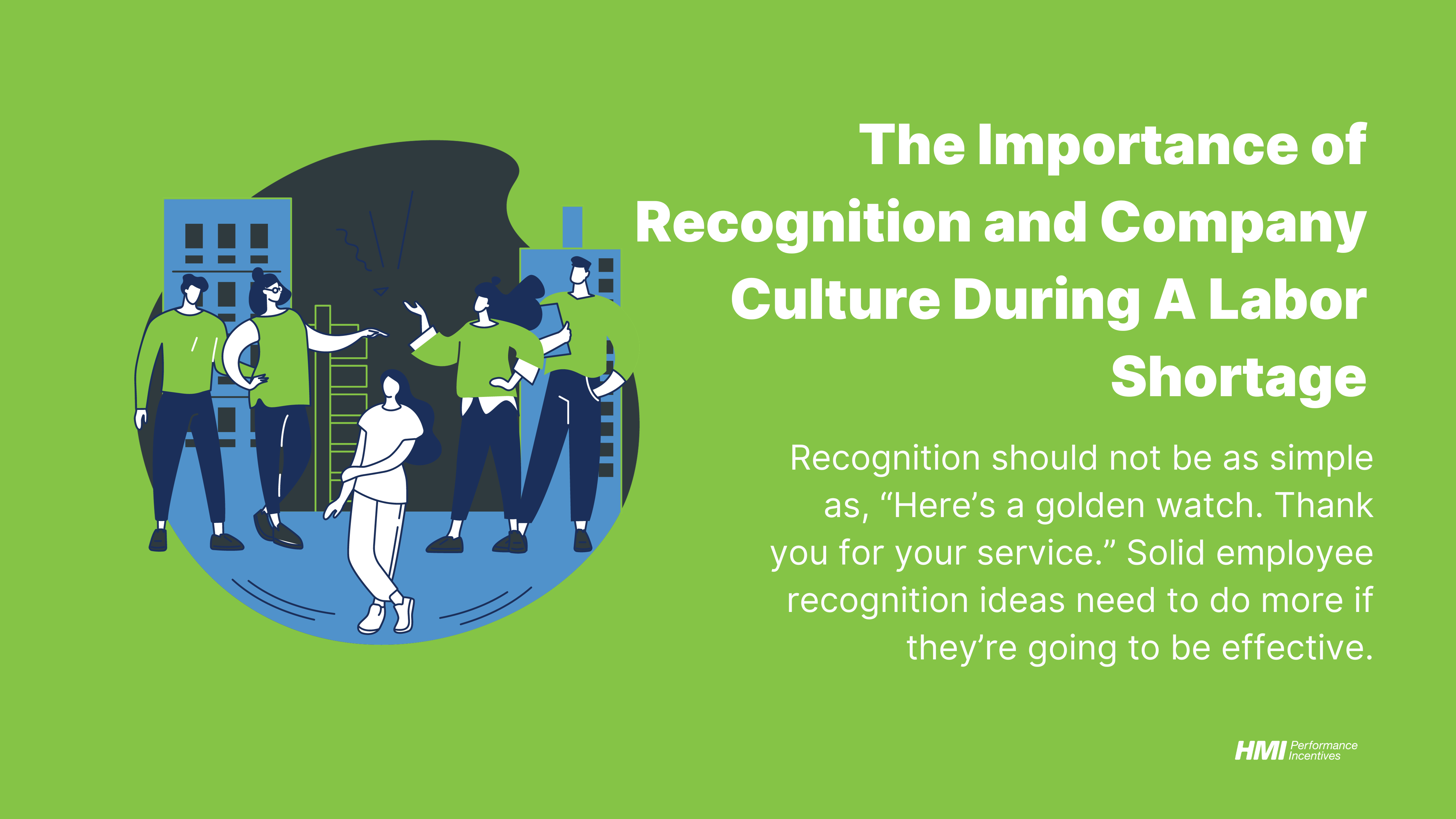Recently, I was communicating with a successful, national distributor. We were talking about some of our employee recognition ideas that we’ve used during labor shortages.
In trying to better understand their strategy and needs, I asked my contact to describe how they recognize their employees.
Free Download: B2B Customer Loyalty eBook
He replied that, having been in business for nearly a century, everything they do is designed with a long-term mindset. Specifically:
-
Having an anniversary celebration every few years to recognize their key stakeholders.
-
This strategy isn’t just for employees. It’s a multi-tiered operation, planned out for the entire year. Suppliers, employees, and customers are all invited to participate in their own version of the program
-
Suppliers are recognized during company-sponsored events
-
Employees are offered individual travel awards for their service
-
Loyal customers are provided with a heightened group incentive travel award.
By doing this, his organization was providing some unique employee recognition ideas and strategies. These made everyone throughout the value chain feel appreciated.
It also established a strong foundation for the company culture. This was something that each key stakeholder would associate with the business and its brand.
This got me thinking. Recognition should not be as simple as, “Here’s a golden watch. Thank you for your service.” Sure, there’s room for this. But solid employee recognition ideas need to do more if they’re going to be effective.
Today’s Labor Shortage Environment
In a previous blog, we touched on the unprecedented labor shortage facing owners and operators across industries. This isn’t news to distributors. They themselves highlighted the dearth of skilled labor as one of the major challenges they’re facing this year.
Needless to say, it seems like hiring strong talent will continue to be top of mind across the distribution space. But we also don’t want to ignore the other half of this equation: employee retention.
We often hear a lot about the importance of customer acquisition and retention. These are constant buzzwords. That’s because they’re consistent business challenges that, when overcome, can lead to better sales.
On the other hand, “talent acquisition” and “employee retention” don’t seem to be as buzzy outside of the tech space. This is because in more traditional industries they have become clichés.
They’re now accepted industry norms that are part of the cost of doing business.
But as we’ve been hearing, the current labor issues have no immediate end in sight. As a result, topics are beginning to move up the list in c-suite strategy meetings.
More and more, distributors and manufacturers are needing to look for ways to fill their labor gaps with strong new talent. Also, they’re looking to retain existing talent with tactics and tools normally reserved for customer-centric strategies. So, what do they have at their disposal? Below are a couple of ideas.
Strategy #1: Improving Company Culture
A great place to start when looking to recruit, retain, and develop talented individuals and teams is to focus on the big picture.
Your organizational culture will likely be an important consideration for any employee. This is especially true during a labor shortage, as you jockey for position and market share with competitors who are having the same issues.
According to the Society for Human Resource Management (SHRM), corporate culture is “the social operating system shaping organizational values, defining how people work and determining how they succeed within an organization.”
The key terms here, “social”, “values”, “how people work”, and “how they succeed”. All point to where the emphases should lie when building an outstanding company culture.

- A Social Component
Even in a time of remote work, the workplace remains a social environment. If a workplace is lacking a social component, chances are employees won’t enjoy working there.
This doesn’t mean you have to go out and immediately install a ping pong table in the break room.
However, you can focus on establishing annual employee-focused events.
Or find ways to break a large organization down into cohorts or teams and create opportunities for these teams to socialize and compete.
You could even include a team incentive to increase engagement and workplace cohesiveness.
- Values
In addition, organizational values are a big part of company culture. These two things—values and culture—should be a focus of company communications.
Finding ways to define your culture to prospective employees can go a long way towards reinforcing the values you want it to represent.
One way to do this is through video testimonials from current employees. Find those who can speak to what the company stands for and what it means to them.
Another method is to refine your organization’s mission statement—or develop one if you haven’t already.
People today feel more aligned with mission-driven companies. So create a strong, actionable, and impactful mission statement. This can give your employees a north star they can point to and rally behind.
- How People Work
How people work has been a hot topic in the post-pandemic world.
In fact, a recent Harris Poll found that over three-quarters of employees want a more flexible work environment. This was especially true in terms of their schedule and location.
Because of this, employers are having to reevaluate their remote working protocols. The balance between satisfying employee desires and keeping operations running smoothly is becoming ever more important.
It may benefit business leaders to consider what kind of work can be done remotely. They may need to be more proactive with these policies and practices. Many employees now expect that their schedules and general work-life balances be taken into account.
- How People Succeed
Finally, consider how people succeed. This plays a key role in determining the relative strength or weakness of organizational culture.
Common sense dictates that employees want clear goals set for them, and they want to be adequately rewarded when they achieve them.
We tend to think of money when it comes to rewards in the workplace. However, studies have shown that money is not always the best motivator, and now this may be truer than ever.
With that in mind, it might be time to consider a professionally managed incentive program. One that rewards for specific, high-impact, and achievable KPIs can be a difference-maker. It can keep employees engaged and inspired.
And it can prevent them from looking for greener pastures outside your organization.
Strategy #2: Employee Recognition Ideas
A strategy with unique employee recognition ideas is also useful. It can improve and supplement company culture, yes, but it also deserves a place of its own as an employee retention tool.
That’s because when employees feel under-appreciated, this can undermine any other efforts you’ve made to bolster engagement specifically and your corporate culture in general.
In fact, a Gallup workplace study highlighted employee recognition ideas as key elements in improving employee engagement. They have a significant impact in absenteeism, productivity, turnover and even customer loyalty.
Making a point of showing everyday appreciation is a good place to begin. But there are other steps that you can take as well. For example:
-
Have the company CEO or high-level executive give a team or hard-working individual a shout-out at each companywide event. This can be an effective method of dispensing informal recognition.
-
Provide meaningful awards for key workplace anniversaries or outgoing (i.e. retiring) employees. This sends a signal to employees that they are seen and respected, rather than “human capital”.
-
Create an ongoing points-based recognition platform—one that functions either with a top-down or peer-to-peer approach. This is also a great way to embed employee recognition into your organizational DNA. It provides a constant reminder that your business “walks the walk” when it comes to appreciating its workforce.
Conclusion
To recruit, retain, and develop employees, business leaders need to be very deliberate with how they treat and recognize these key stakeholders.
It might be easy to think that “their salary is ‘thank-you’ enough” or “they know that they’re appreciated”. But these kinds of assumptions may not work in difficult labor environments.
Standing out may demand a holistic reassessment of company culture. If you can combine this with some innovative employee recognition ideas, all the better.
The case study of the longstanding distributor showcases one way to structure a strategy during a labor shortage. Not only does it intertwine employee retention with that of customers and partners. It also dovetails recognition with the broader company culture.
If we truly believe our people are our most valuable assets, then we need to start to build our approach around this belief.
Yes, it may require a strategy that is both broad and creative. But when done right, the result will be an organization that lasts a century and succeeds no matter what the macro environment looks like.








